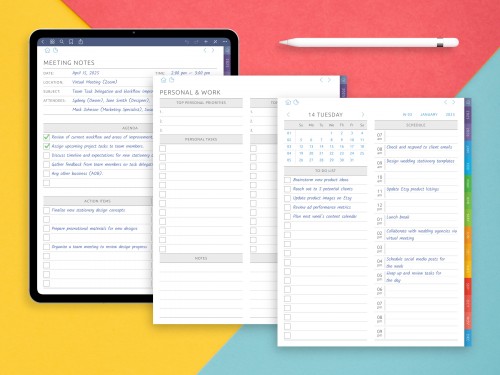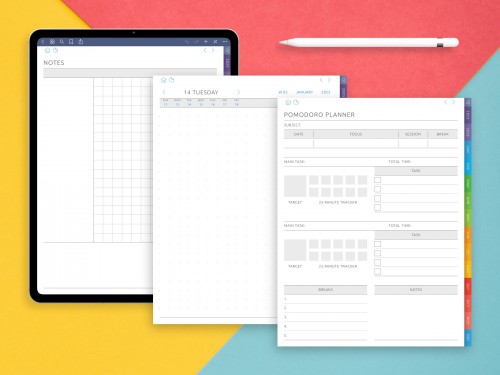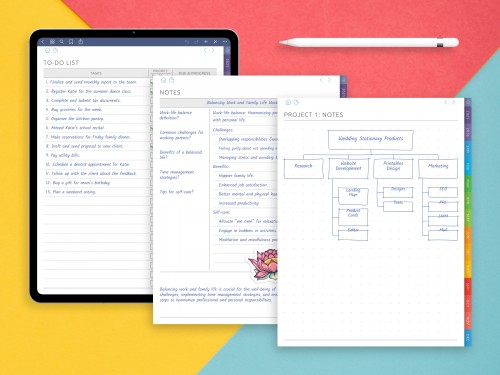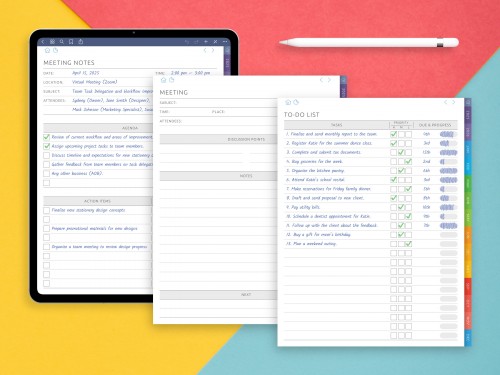Digital Planner vs Paper Planner
In today's fast-paced world, the need for effective time management tools has never been greater. Whether you're juggling work, family, or personal goals, planners remain essential for staying organized and on track. Interestingly, both digital and paper planners are seeing a surge in popularity — but in very different ways. The paper planner industry alone is valued at approximately $1.3 billion, while the broader market for digital organizational tools, including apps and calendars, is estimated to exceed $58 billion. This dual rise reflects not just a preference in tools, but a deeper question about how we plan, think, and stay focused in the digital age. So which one truly suits your lifestyle — the traditional charm of paper or the dynamic power of digital?
What Is a Paper Planner?
A paper planner is a physical organizational tool that typically includes a calendar, to-do lists, note sections, and other features designed to help manage time, tasks, and goals. Paper planners come in various forms — daily, weekly, or monthly layouts, bullet journals, ring-bound systems like the Happy Planner, and even customized notebooks.
Advantages of paper planners:
- Tactile experience: Writing by hand helps with memory retention and engagement.
- No digital distractions: Free from pings, pop-ups, and screen fatigue.
- Creative expression: Encourages doodling, stickers, color coding, and journaling.
Drawbacks of paper planners:
- Limited flexibility: Mistakes require manual correction or messy cross-outs.
- No reminders or automation: You must remember to check your planner.
- Not always portable: Larger formats can be bulky and hard to carry.
- Environmental impact: Regular use of paper and production materials.
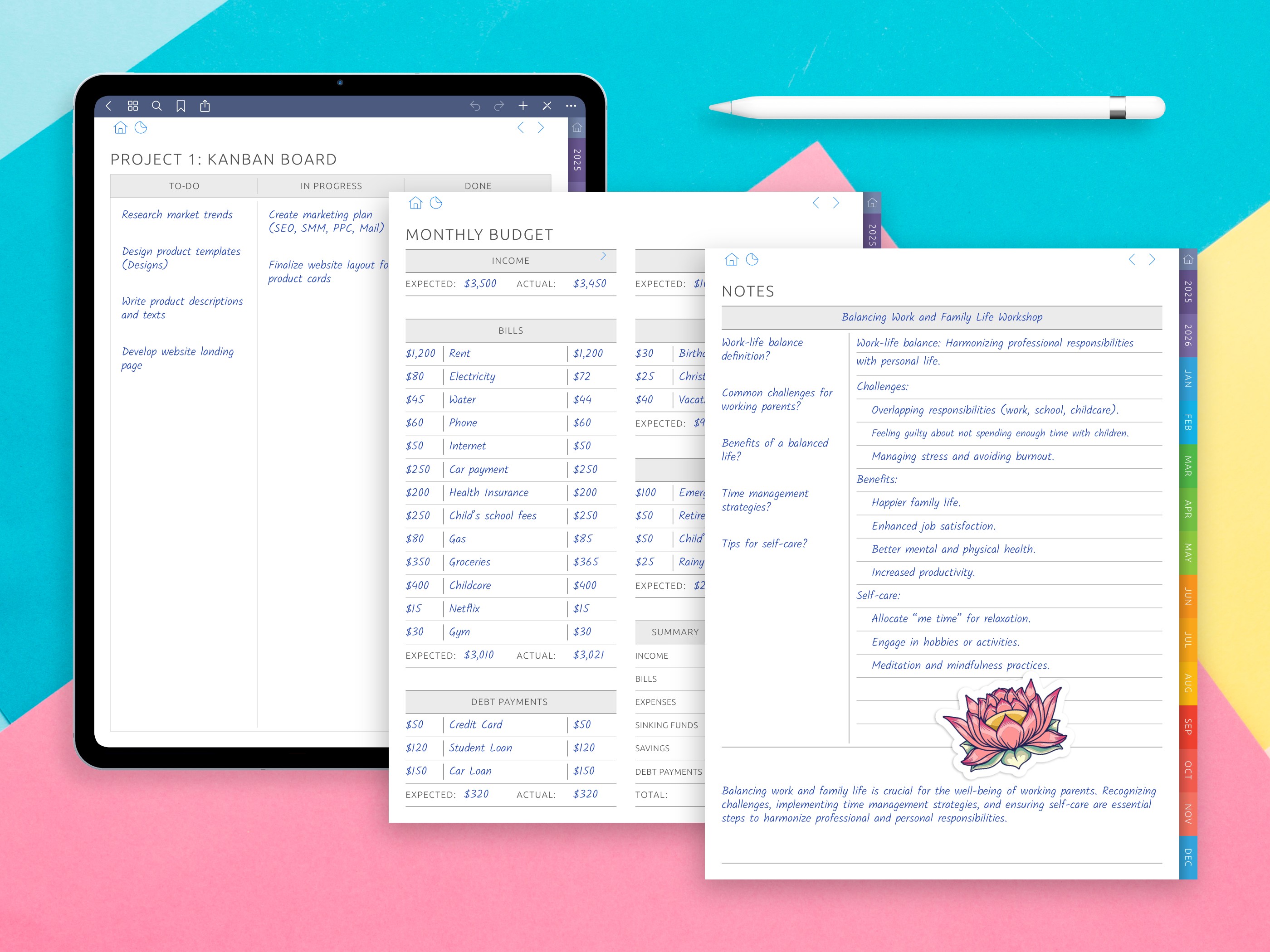
What Is a Digital Planner?
A digital planner is an electronic version of a traditional planner, typically used on tablets, smartphones, or computers. It can be a PDF planner compatible with apps like GoodNotes or Notability, or an app-based tool like Google Calendar, Notion, or Todoist. Many digital planners are hyperlinked for easy navigation and can sync across multiple devices.
Advantages of digital planners:
- Highly portable: Accessible on any device, anytime.
- Editable and customizable: Add, remove, and rearrange pages with ease.
- Built-in reminders: Automated notifications and calendar syncing.
- Eco-friendly: Paperless and reusable.
- Searchable content: Quickly find notes or dates using keywords.
Drawbacks of digital planners:
- Learning curve: May take time to get used to the tools and apps.
- Tech dependence: Requires charged devices and internet access.
- Screen fatigue: Not ideal for those avoiding extended screen time.
- Possible distractions: Notifications and multitasking can interrupt focus.
Top Products and Examples
Whether you lean toward paper or digital planning, there's a growing variety of products tailored to your style, needs, and aesthetic preferences. Here are some of the top-rated planners across both categories:
Best Paper Planners:
- Moleskine Classic Planner is a timeless favorite for professionals, with sleek design and high-quality paper.
- Papier Joy Spiral Planner is Stylish and customizable, ideal for creative users and students.
- Blue Sky Day Designer. Affordable and widely available, great for structured daily planning.
- Erin Condren LifePlanner™ Highly customizable with interchangeable covers and vibrant layouts.
- The Happy Planner has Disc-bound system that allows pages to be added or removed easily — perfect for DIY lovers.
Top Digital Planners:
- OnPlanners Digital Planne is a feature-rich, hyperlinked PDF planner compatible with GoodNotes, Notability, and other apps. Designed for productivity, habit tracking, and goal setting.
- Goodmondayspaper Digital Planner sleek, modern PDF planner with a focus on minimalism and efficient layouts.
- Artful Agenda har combines the look of a paper planner with the power of digital, including syncing with Google, iCal, and Outlook.
- Zinnia Journal & Planner – A visually rich app ideal for creative journaling, habit tracking, and mood boards.
- Notability & GoodNotes Apps in pair with downloadable digital planners and allow handwriting with stylus input.
With so many excellent options, finding your perfect planner — whether digital or paper — is more about personal workflow and daily habits than one-size-fits-all solutions.

Practical Tips for Choosing the Right Planner
Choosing between a digital and a paper planner isn’t just about preference. it’s about finding a system that fits seamlessly into your lifestyle and boosts your productivity. Here are some practical tips to help you make the best choice:
1. Evaluate Your Daily Workflow
Do you spend most of your time at a desk with a laptop, or are you always on the go with a tablet or phone? Digital planners may suit mobile, tech-savvy users, while paper planners work well for those who prefer a tangible routine.
2. Consider Your Planning Habits
If you love handwriting, color-coding, and creative layouts, a paper planner might bring you more joy and engagement. If you like efficiency, automation, and quick edits, digital is likely the better fit.
3. Think About Portability
Digital planners sync across devices, making them ideal for people who switch between work and home setups. Paper planners, on the other hand, can become bulky — especially if you're using multiple sections or formats.
4. Factor in Notifications and Reminders
Need regular prompts to stay on track? Digital planners offer customizable alerts that paper simply can’t match.
5. Test Both Formats
Many digital planners offer free trials or demo versions. Consider testing both formats for a week or two to see which one aligns best with your routine and mindset.
When it comes to digital vs. paper planners, there is no one-size-fits-all answer. Both options offer unique benefits, and the right choice depends on your personal habits, lifestyle, and planning style. Paper planners provide a tactile, distraction-free space for reflection and creativity, while digital planners offer convenience, flexibility, and powerful organizational features.
In fact, many people today are embracing a hybrid approach — combining the best of both worlds to stay focused, creative, and efficient. Whether you're drawn to the classic charm of pen and paper or the dynamic possibilities of digital tools, the most important thing is that your planner supports your goals and helps you stay on track.
Choose the format that inspires you to plan consistently — because the best planner is the one you’ll actually use.



